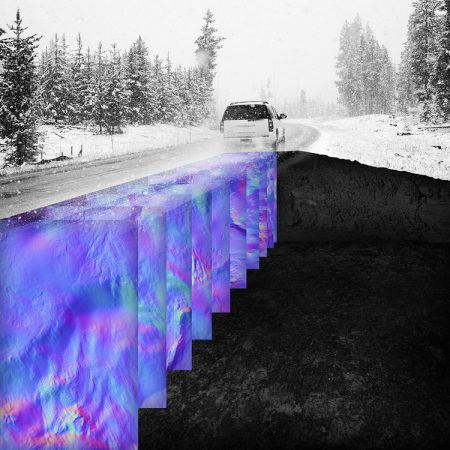August 26, 2018 – A military application, ground-penetrating radar, used to find improvised explosive devices (IEDs), mines, and other potentially harmful or beneficial objects buried beneath the surface, may be the final answer for autonomous vehicles attempting to navigate in snow.
In 2016, MIT’s Lincoln Laboratory developed real-time, nighttime, centimeter-level vehicle location at highway speeds on roads where lane markers and other features were hidden by fallen snow. They did this using ground-penetrating radar to detect what traditional detection systems in existing autonomous vehicles could not. That’s because autonomous vehicle developers use optical detection for navigating roads and have been challenged by weather conditions that cover surfaces making it impossible to visually identify the lane and side-shoulder markers. Using very high frequency (VHF) radar mounted beneath vehicles made it possible to see these important points of reference in real time. Equipped vehicles were easily able to navigate in bad weather conditions at 100 kilometers per hour (60 miles per hour) highway speeds. The test results from 2016 were published in an article appearing in the Journal of Field Robotics.
The technology MIT developed is called Localizing Ground Penetrating Radar, or LGPR. Its main component is a waterproof, 12-element antenna array mounted under the vehicle and costing about $100 US per unit. The array uses both VHF and stepped-frequency continuous waves to penetrate the ground providing a detailed road and beneath-the-road map which can be compared by the onboard autonomous vehicle system with its existing maps and visual imaging.
The immediate application has been military with the LGPR device mounted on tanks and armored personnel carriers and tested in Afghanistan and Iraq to detect explosive hazards on supply routes and in open ground areas.
The next step in the evolution of LGPR may come from a new MIT spinoff startup company, WaveSense, which is taking the technology from the laboratory to commercial application in autonomous vehicles.
Other applications include utility companies mapping buried power and pipelines, and cities needing to create a subterranean map of infrastructure below the surface.
WaveSense LGPR has demonstrated an ability to see 3 meters (10 feet) below the road. For the purpose of autonomous vehicles, the penetration need only be beneath an ice or snowy surface, no more than a few centimeters directly below and laterally. It works even when cameras or other autonomous technologies like LIDAR fail. And should the LGPR fail then it is likely the optical cameras and LIDAR will remain operational, which means equipped vehicles will have multiple ways to ensure they can navigate autonomously.
















